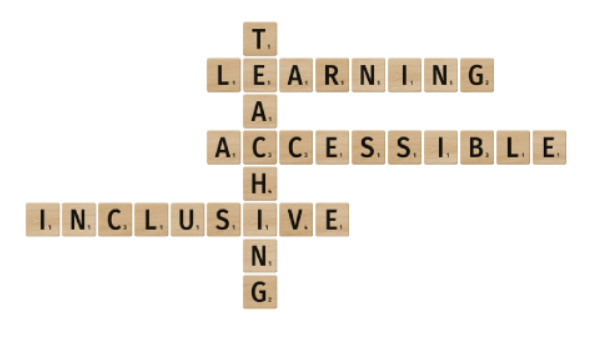
June 6, 2023, by Helen Whitehead
Three achievable ways to make your teaching more inclusive
When developing learning in higher education institutions, we always try to make it relevant and effective, to ensure that all students have equal access to the learning. Inclusive teaching practices are crucial for making sure that every student feels valued and supported in their educational journey. In this blog post, we will discuss three ways to be more inclusive in higher education – that are also achievable within an academic’s workload.
1. Incorporate Universal Design for Learning (UDL)
Universal Design for Learning (UDL) is a framework that aims to make education accessible to all students, regardless of their individual learning needs. UDL (originally developed by CAST, a US nonprofit education research and development organization) involves designing lessons, activities, and assessments that provide multiple ways of representation, expression, and engagement. Fully describing this framework and how to implement it is beyond the scope if this post, but even just glancing at the definitions and explanation of the UDL Framework [external link] will probably give you ideas. The basic idea is that teachers should present information to learners in a variety of formats (text, media, graphic organisers etc.), encourage diverse forms of expression, and create opportunities for student engagement that take into account various learning styles. See our introductory blog post on UDL. We’ll be covering more ideas for implementing UDL in posts later this year.
2. Use technology to quickly create accessible learning materials
Making teaching inclusive means it’s also accessible. There are a number of tools and resources that not only promote inclusivity and accessibility but also support learning. For example, captions on videos are now easy to generate. Echo360 Engage produces transcripts and captions that are more and more accurate all the time. The Sensus Access tool in Moodle enables students to convert learning materials into other formats: for example text into audio. Using activities such as Moodle forums for discussion, MS Polls in Teams meetings, Moodle quizzes and interactive activities in Xerte Toolkits can encourage students to engage, and help them participate regardless of their physical location or any physical disability. Using the Accessibility checkers built into Microsoft and Moodle software makes it easy to check and fix any accessibility pitfalls. The Learning Technology team [Sharepoint site: sorry, UoN only] can help, support, advise and train staff in using technology accessibly.
3. Diversity and collaboration
Inclusive teaching practices welcome and include students from diverse backgrounds. We’re very experienced at this at the University of Nottingham. Having such a diverse staff and student body means we can incorporate different perspectives and experiences into learning opportunities. By valuing diversity we encourage students to learn from and respect one another’s differences.
One of the best ways to encourage students to learn from one another is by setting up collaborative activities. Collaboration and learning from peers can enhance student engagement as well as promoting inclusivity. By engaging with opportunities for group work, peer review, and other collaborative activities, students can work together and learn from one another, including each others’ unique experiences and perspectives. Here are some ideas for collaborative activities.
Making your teaching more inclusive isn’t a quick fix, but you can get a great start from a commitment to creating a diverse and welcoming teaching room environment, providing diverse and accessible materials not just for students with disabilities, and incorporating various learning activities, some involving technology to enhance learning. Ultimately it will be possible to create an environment in which every student has more chance of thriving and succeeding.
No comments yet, fill out a comment to be the first

Leave a Reply